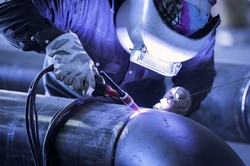New system to inspect welds in nuclear plants
Austenitic steel is often used in the construction of pipework in nuclear power plants (NPPs) and the petrochemical industry due to its resistance to corrosion and its high fracture resistance. Pipelines are usually constructed by welding together sections of pipe. However, these welds can develop defects that may go undetected if not inspected and can lead to mechanical failure when placed under pressure due to fatigue. The project TOMOWELD(opens in new window) (Development of quantitative radiographic tomography technology for the in-situ inspection of welded austenitic safety critical pipework in the nuclear power generation and petrochemical industries) aimed to develop a mobile X-ray tomographic system for the accurate inspection of austenitic steel welds at sensitivity levels required by the nuclear industry. The majority of current techniques for the inspection of austenitic welds involve using ultrasonic testing techniques. However, as a result of the material internal structure causing ultrasonic beam scatter, defect sizing and positioning is difficult and inaccurate. Therefore, inspection techniques based on film radiography are also used, but these suffer from long exposure times and limited information from inspection results. The application of X-ray tomography by project partners helped overcome the limitations of current inspection techniques by providing 3D information of the internal structure of the welds. This enabled detailed cross sectional analysis and dimensional measurements to be obtained. The new detector permitted the selection of X-ray energy thresholds to obtain an optimum energy range and a reduction in the effect of scattered radiation. TOMOWELD has resulted in a greater level of confidence in the integrity of austenitic welds in NPPs through the accurate sizing and characterisation of critical defects. Data collected regarding the condition of critical pipework will enable maintenance work to be prioritised and a reduction in the amount of time needed for servicing the pipeline, thereby reducing costs.







